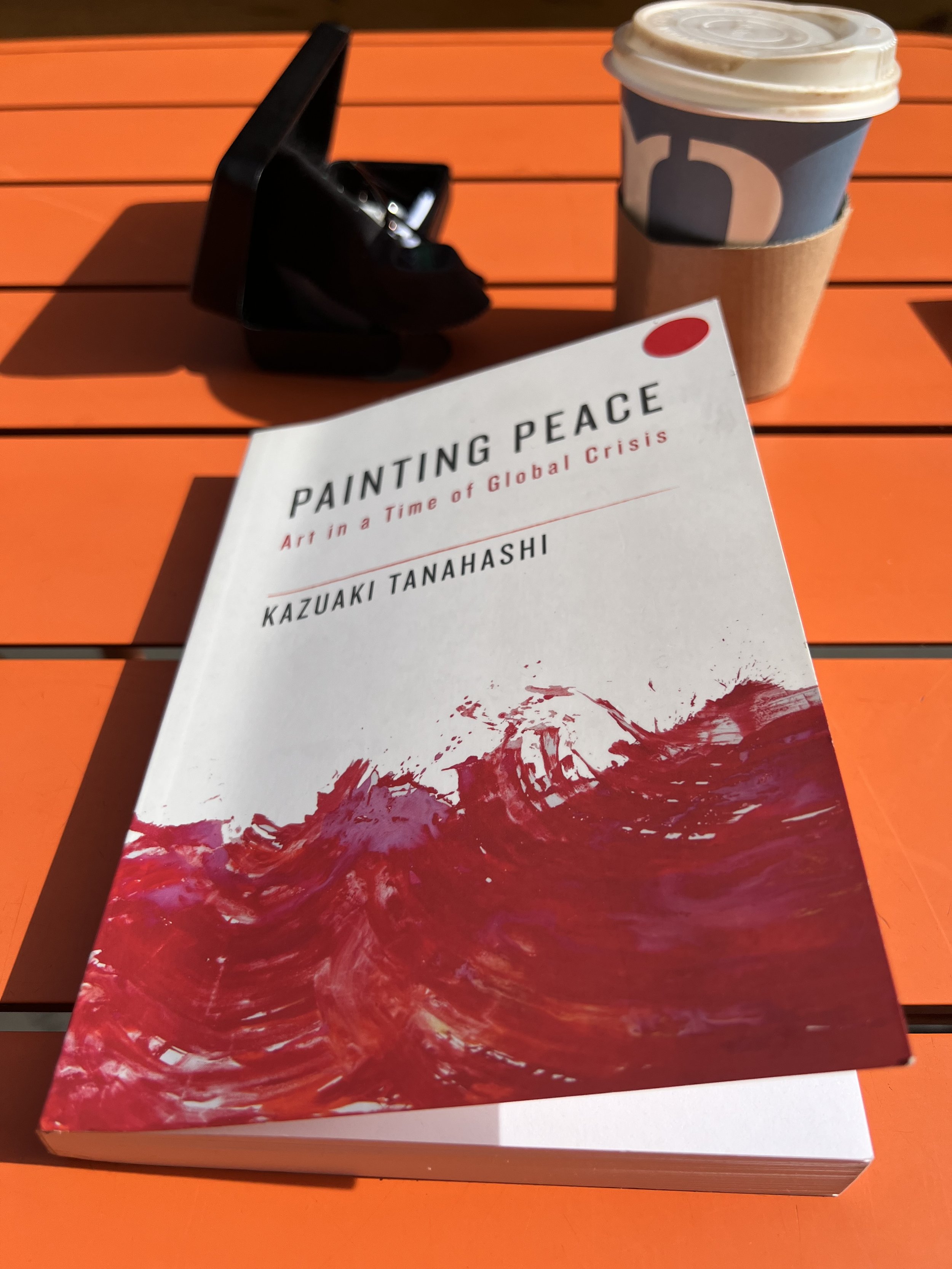My eye fell on this book in the San Fransisco Zen Centre book shop, and I sat reading it for several hours outside my favourite coffee shop the morning I was due to fly home.
First it opened up the question again of “activist art”. See separate post.
It is this passage though that really struck me.
“In my twenties, the I was a beginning artist looking for a spiritual guide, I read Dogen’s poems and essays, which blew my mind. Here is the passage that inspired me most:
‘Birth (life) is just like riding in a boat. You raise the sails and row with the pole. Although you row, the boat gives you a ride and without the boat, you wouldn’t ride. But you ride the boat and your riding makes the boat what it is. Investigate a moment such as this. At just such a moment there is nothing but the world of the boat. The sky, the water, and the shore are all the boat’s world.”
I had been studying European literature and philosophy, the writings of the Existentialists in particular. Camus points to the impermanence of life, in saying that we are all on death row. In my view, the Existentialists expressed helplessness, despair and boredom because they tried and, by and large failed to find a “way out” of a helpless situation after they declared “God is Dead”. When I saw Dogen’s positivity, it was as if he were presenting the next step to an existentialist understanding.” (p178-9)
I am grateful and glad to see this articulated. I studied English Literature at Sheffield University 1976-79, and in the final year I spent a lot of time reading read such works, including Camus, TS Eliot — “The Wasteland”, and the Theatre of the Absurd playwrights…
The Theatre of the Absurd (French: théâtre de l'absurde [teɑtʁ(ə) də lapsyʁd]) is a post–World War II designation for particular plays of absurdist fiction written by a number of primarily European playwrights in the late 1950s. It is also a term for the style of theatre the plays represent. The plays focus largely on ideas of existentialism and express what happens when human existence lacks meaning or purpose and communication breaks down. The structure of the plays is typically a round shape, with the finishing point the same as the starting point. Logical construction and argument give way to irrational and illogical speech and to the ultimate conclusion—silence.[1].
https://en.wikipedia.org/wiki/Theatre_of_the_Absurd. Accessed 20/2/2023
I remember Sartre’s phrase “Hell is other people” ….!
I have expended a lot of energy and It has taken many years to root out my own negativity and depression. I will need to continue to practice — through zen practice, calligraphy and art — and life activity.
To experience the oneness of life. To taste and be supported by the vastness and magnificence of existence, the “lively energy of life itself”, to feel it blooming within my body as the whole world. To be able to express it. What a relief!
And gratitude to Gordon Onslow Ford for articulating the joy and aliveness of marks, which “express the state of good fortune in being alive”.
